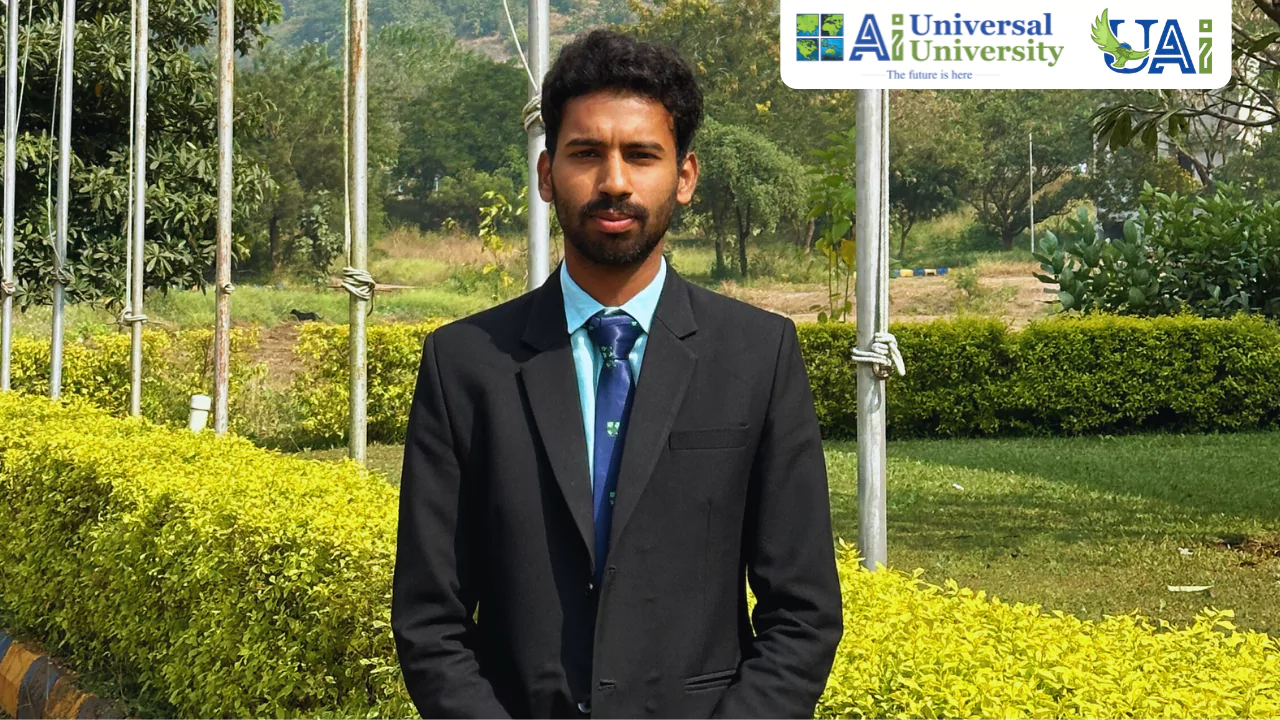
- January 6, 2025
- Student Blog
How AI is being used by cybercriminals and how organizations can defend against them.
Artificial Intelligence (AI) has revolutionized countless fields, and cybersecurity is no exception. As a student at Universal AI University, India’s first AI-focused institution, I have delved deep into the dual nature of AI—its immense potential to fortify defences and its equally significant risks when weaponized by cybercriminals. This battleground between AI-powered defences and AI-driven attacks is something I find both fascinating and challenging. Understanding this dynamic is critical to building a resilient cybersecurity framework, and it has been a central focus of my learning.
AI: A Double-Edged Sword in Cybersecurity
AI has become a transformative force in the realm of cybersecurity. While it empowers organizations to fend off threats with tools like SIEM, EDR, SOAR, IPS, IDS, firewalls, and DLP, it also provides cybercriminals with sophisticated means to launch targeted attacks. At Universal AI University, I am learning how to harness AI responsibly and counter the ever-evolving tactics of malicious actors. Let me share insights into both sides of the AI coin in cybersecurity.
AI-Powered Cyber Attacks
- Malware and Ransomware
- AI-Driven Evasion Techniques: Modern malware employs AI to evade detection by analyzing antivirus software behaviours and adapting in real-time. For instance, AI enables malware to modify its code dynamically, making it difficult for signature-based systems to detect.
- Ransomware as a Service (RaaS): Cybercriminals are now offering AI-enhanced ransomware tools on the dark web. These tools automate the identification of valuable data, encrypt it, and demand ransom, making sophisticated attacks accessible to less skilled hackers.
- Automated Attacks
- Botnets and DDoS Attacks: AI-controlled botnets orchestrate large-scale Distributed Denial of Service (DDoS) attacks that overwhelm servers with traffic. These botnets adapt to countermeasures, making them more resilient and harder to neutralize.
- Vulnerability Scanning and Exploitation: AI automates the process of identifying and exploiting vulnerabilities, learning from previous attacks to enhance its efficiency and precision.
AI-Powered Defences
- Threat Detection and Response
- SIEM (Security Information and Event Management): Through AI-powered SIEM systems, I’ve learned how to collect, analyze, and correlate security events from multiple sources. These tools detect anomalies and prioritize threats by identifying patterns within massive datasets.
- Firewalls
- Next-Generation Firewalls (NGFW): AI enhances NGFW capabilities by reducing false positives and improving accuracy in detecting advanced threats. AI-driven firewalls are pivotal in identifying malicious activities that traditional systems often miss.
- Data Loss Prevention (DLP)
- AI-Driven DLP Solutions: These systems analyze the content of emails, files, and other data to prevent unauthorized sharing of sensitive information. By monitoring user behaviour, AI identifies unusual activities that could signify a data breach. At Universal AI University, I’ve been taught to implement DLP strategies that enforce security policies and safeguard critical data.
The Role of AI University
As a student at India’s first AI-centric institution, I have gained firsthand knowledge of navigating the complex relationship between AI and cybersecurity. Through comprehensive programs, I’ve learned to leverage AI for defensive purposes while also understanding how to outpace adversaries by anticipating and countering sophisticated threats. Universal AI University fosters a mindset of responsible AI usage, ensuring that innovation is balanced with security.
Conclusion
In the ever-evolving landscape of cybersecurity, the fight against AI-driven cyberattacks requires not just cutting-edge technology but also informed individuals capable of harnessing AI ethically and effectively. At Universal AI University, I have gained the expertise and confidence to navigate this delicate balance between innovation and security. By integrating proactive strategies, continuous learning, and collaborative efforts, we can stay one step ahead of adversaries. As we move forward, the responsibility lies with us to ensure AI is wielded as a force for good, shaping a safer and more innovative digital world. With the knowledge and tools I’ve acquired, I am ready to contribute to this vision and play my part in securing our collective future.
Ashish Shetty
MBA 1ST Year G-11 Batch
Universal Ai University
Dharwad, Karnataka




